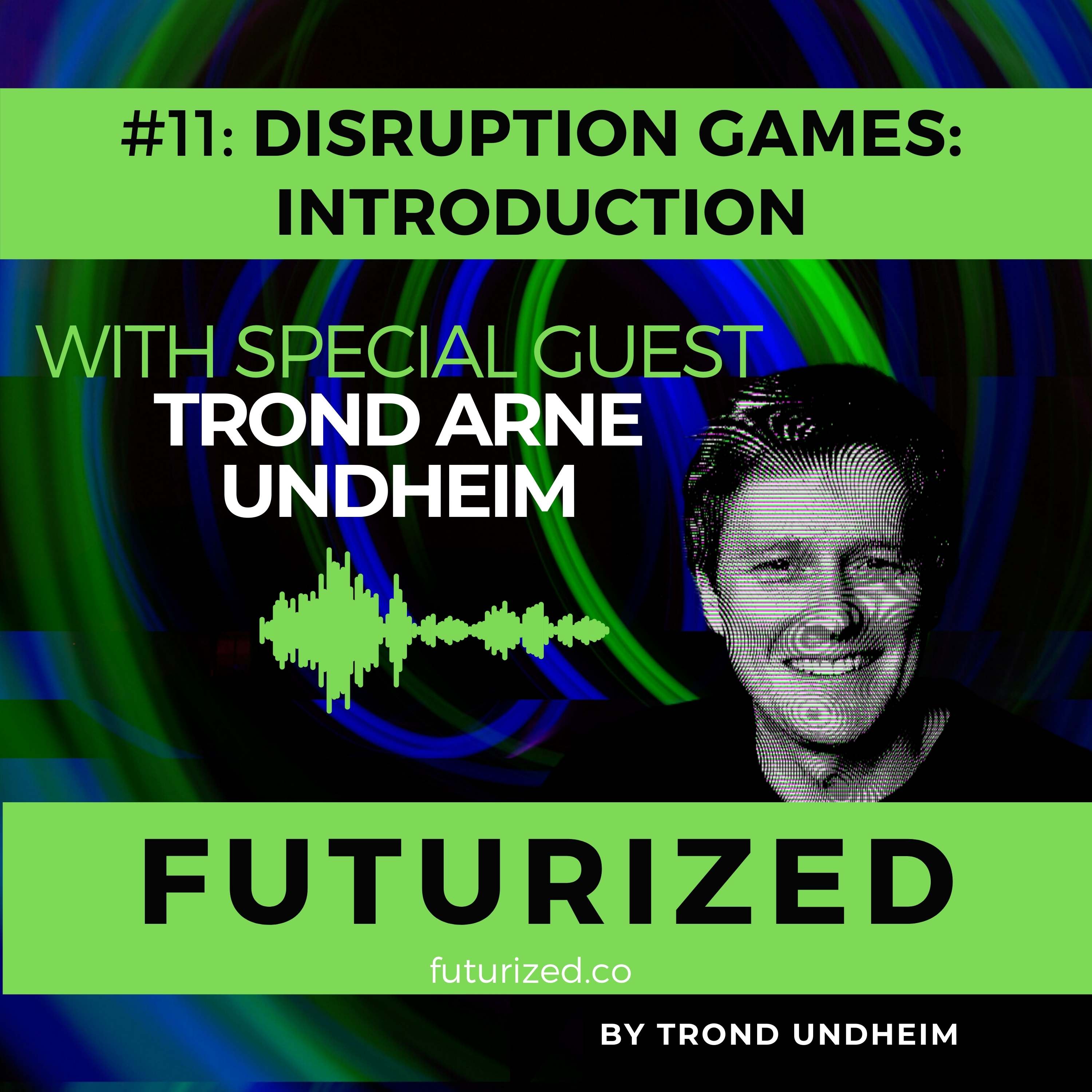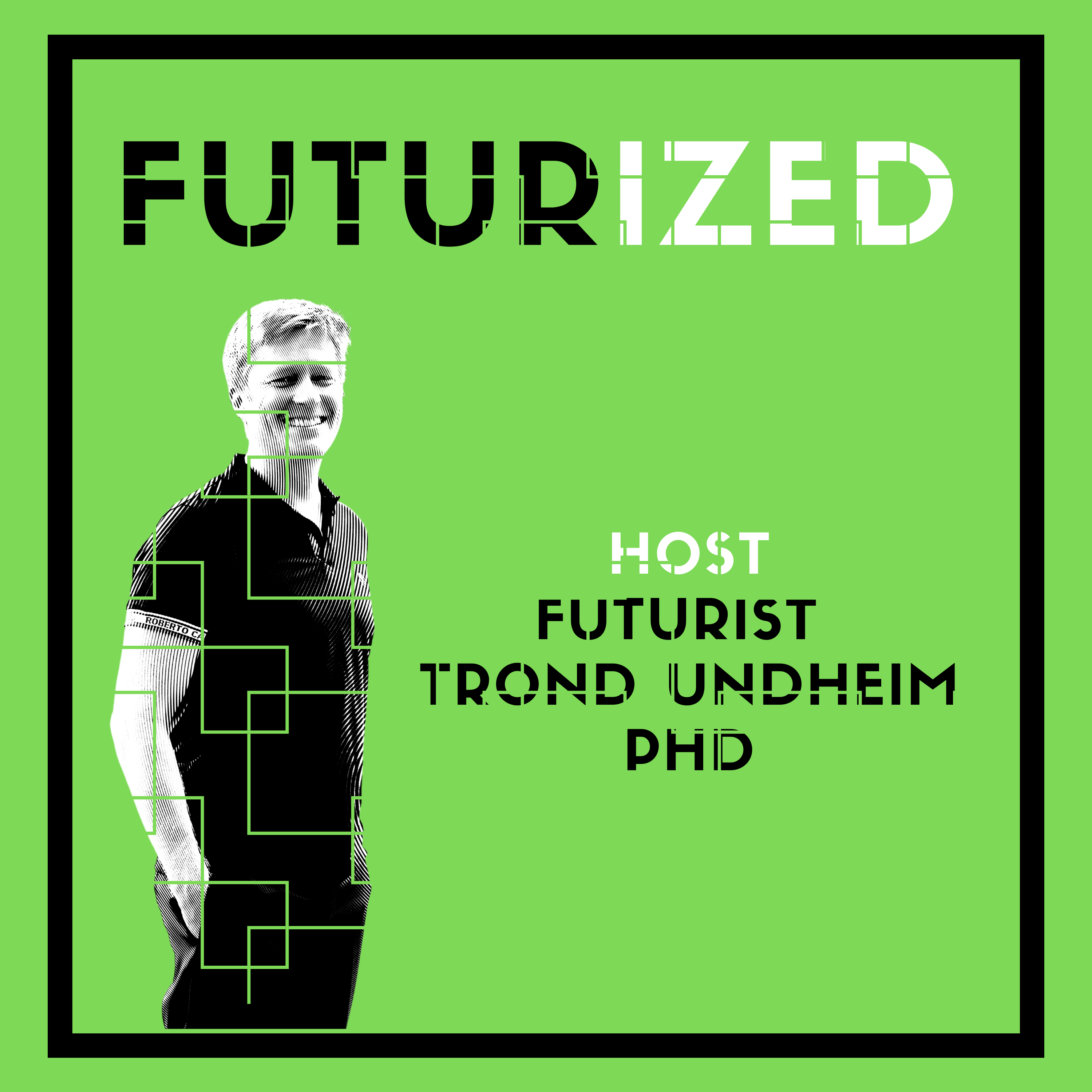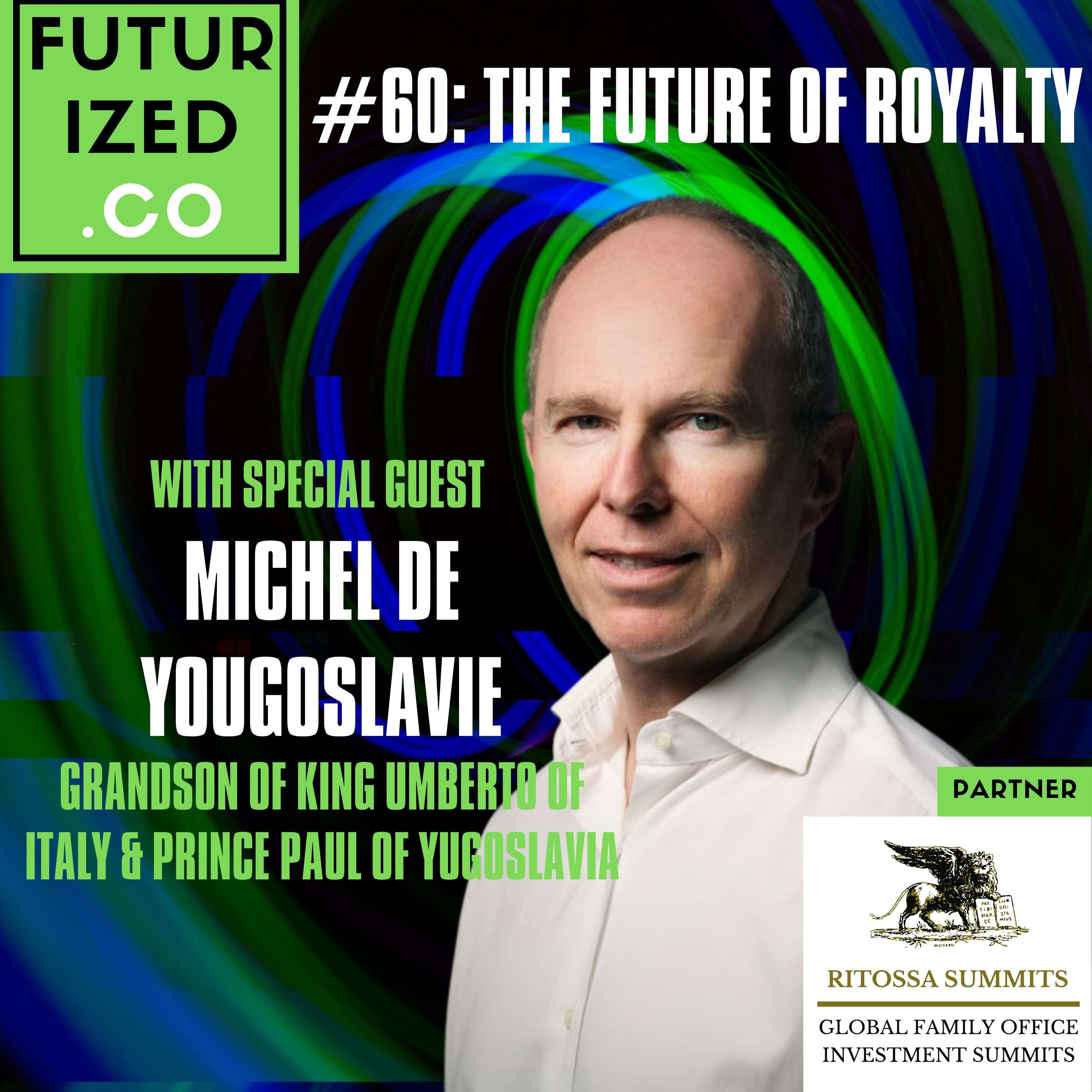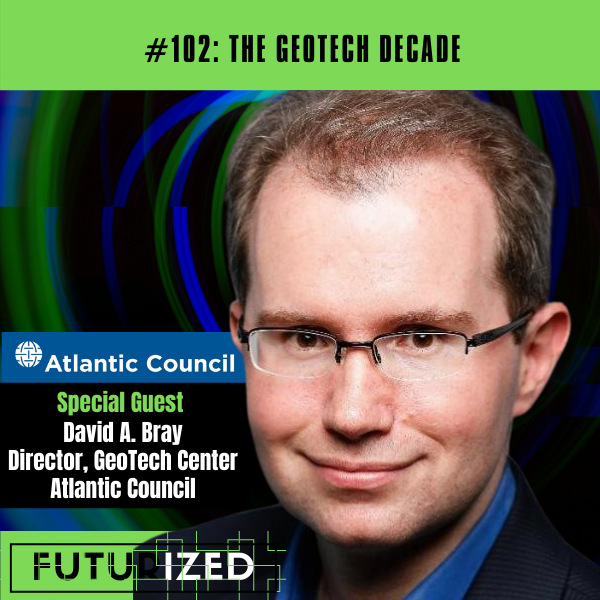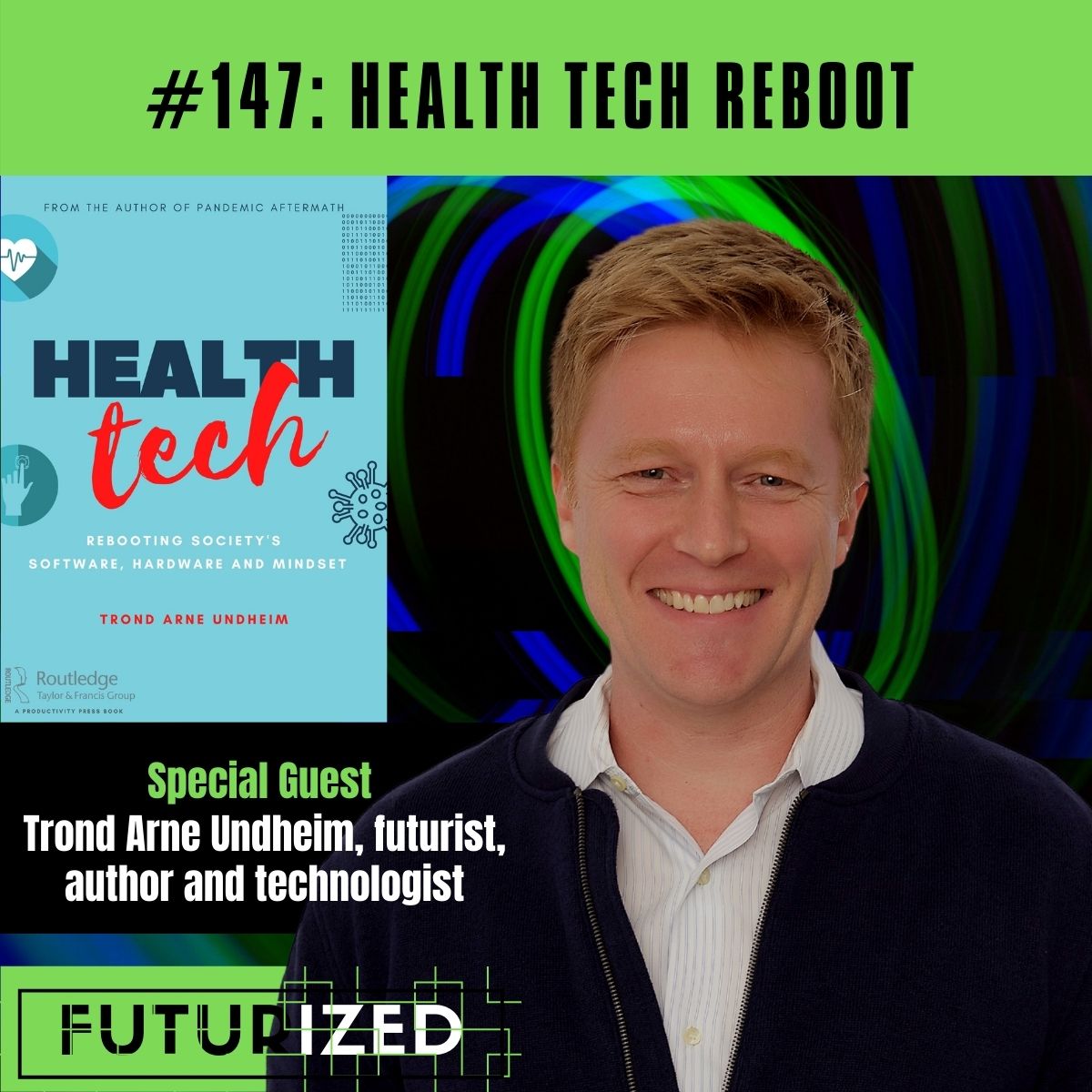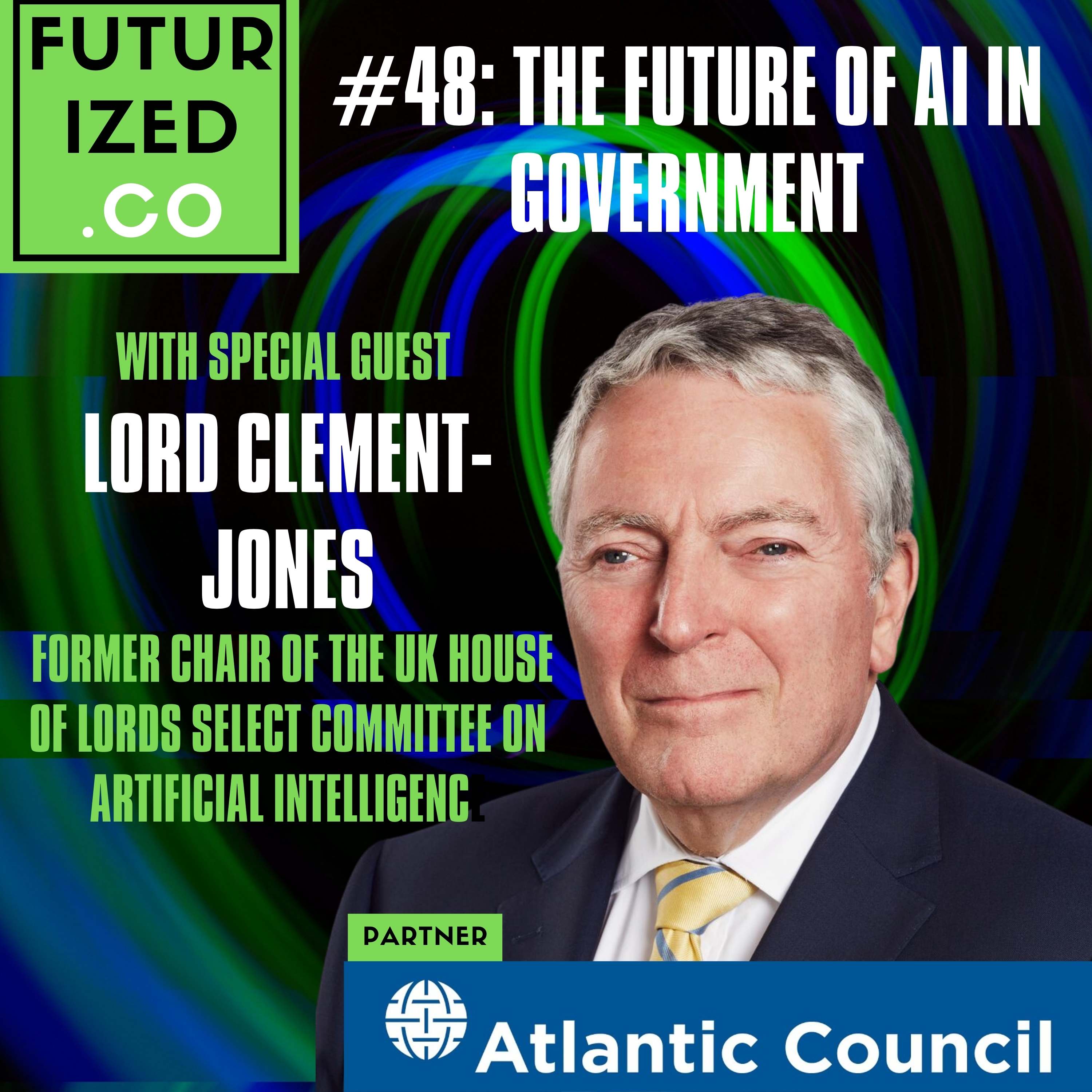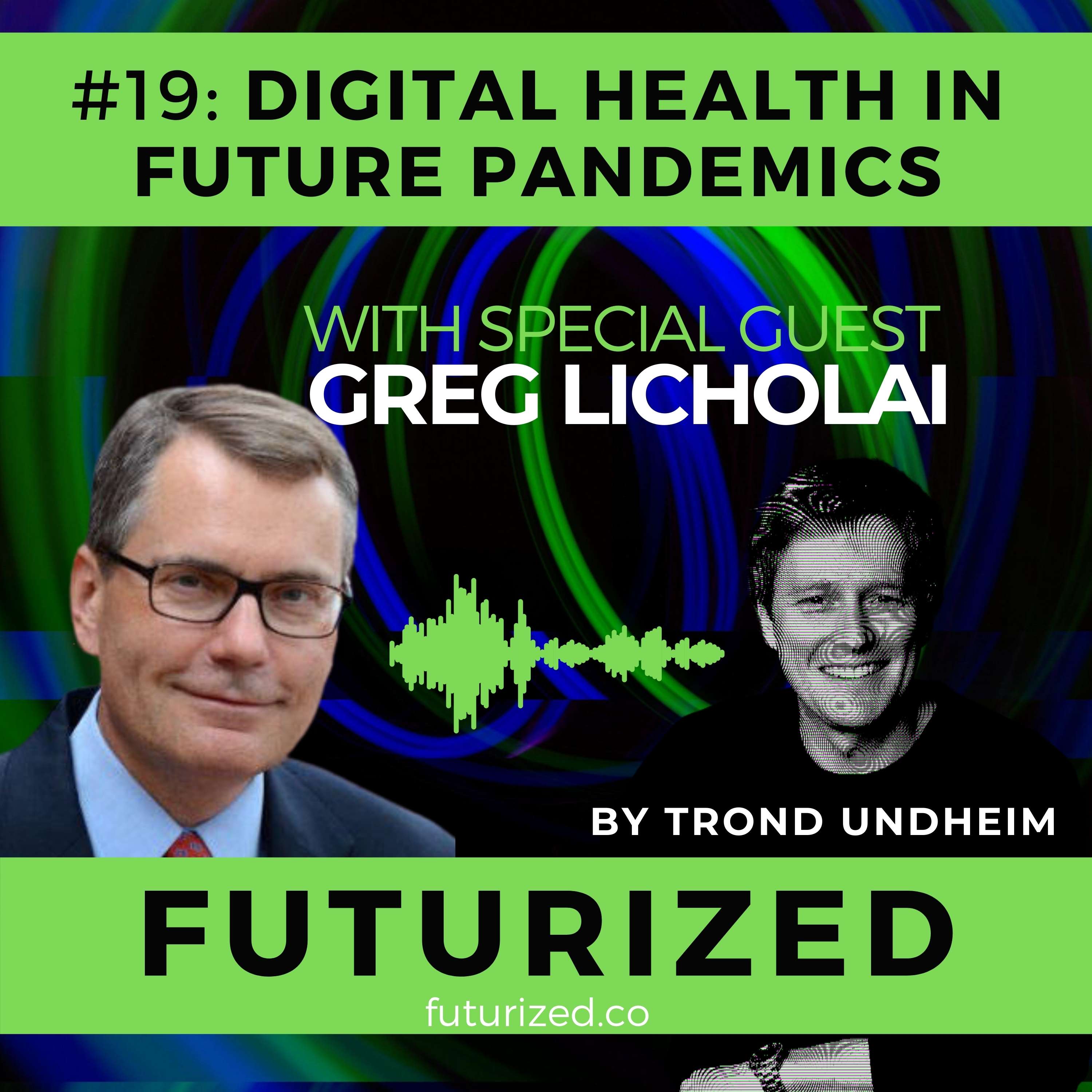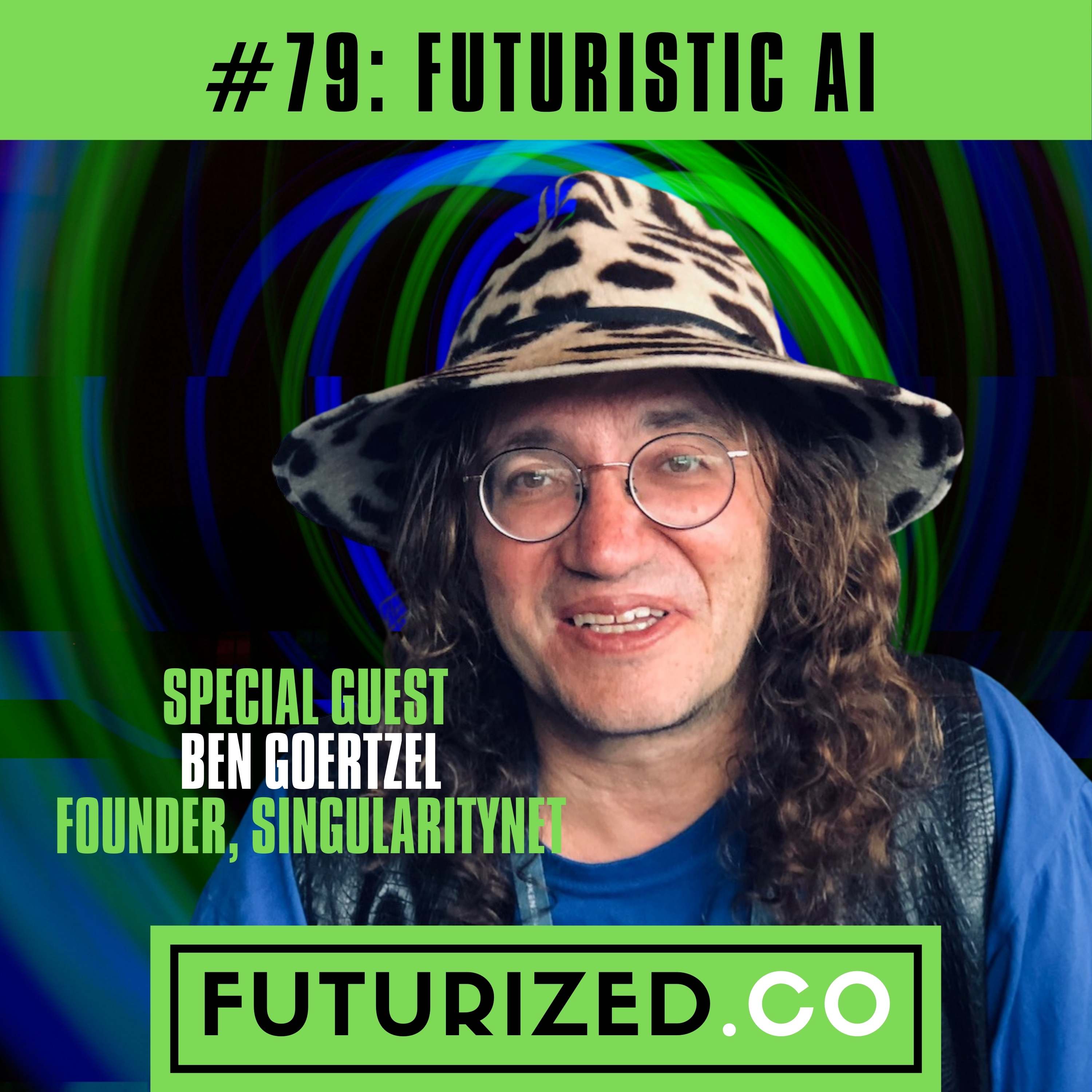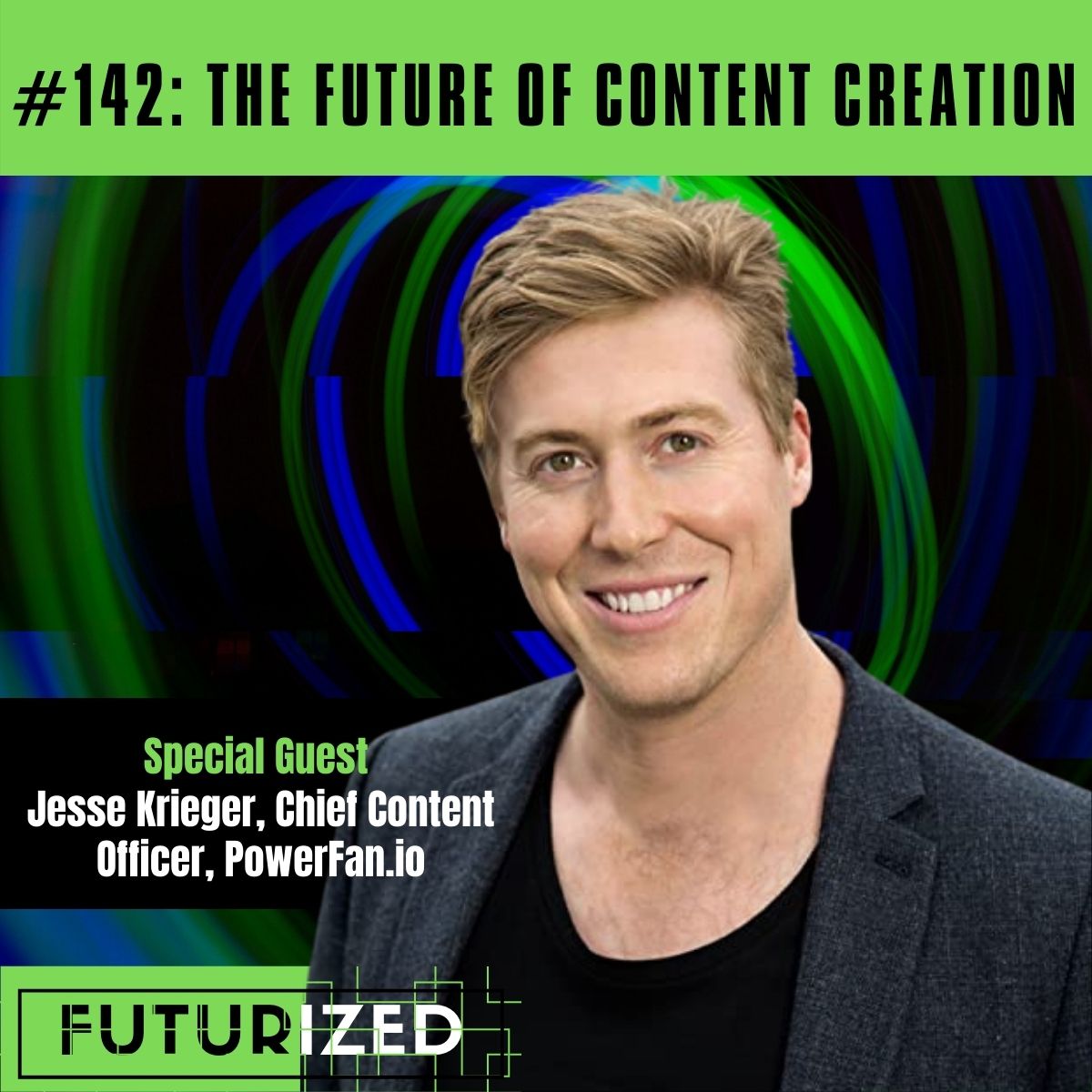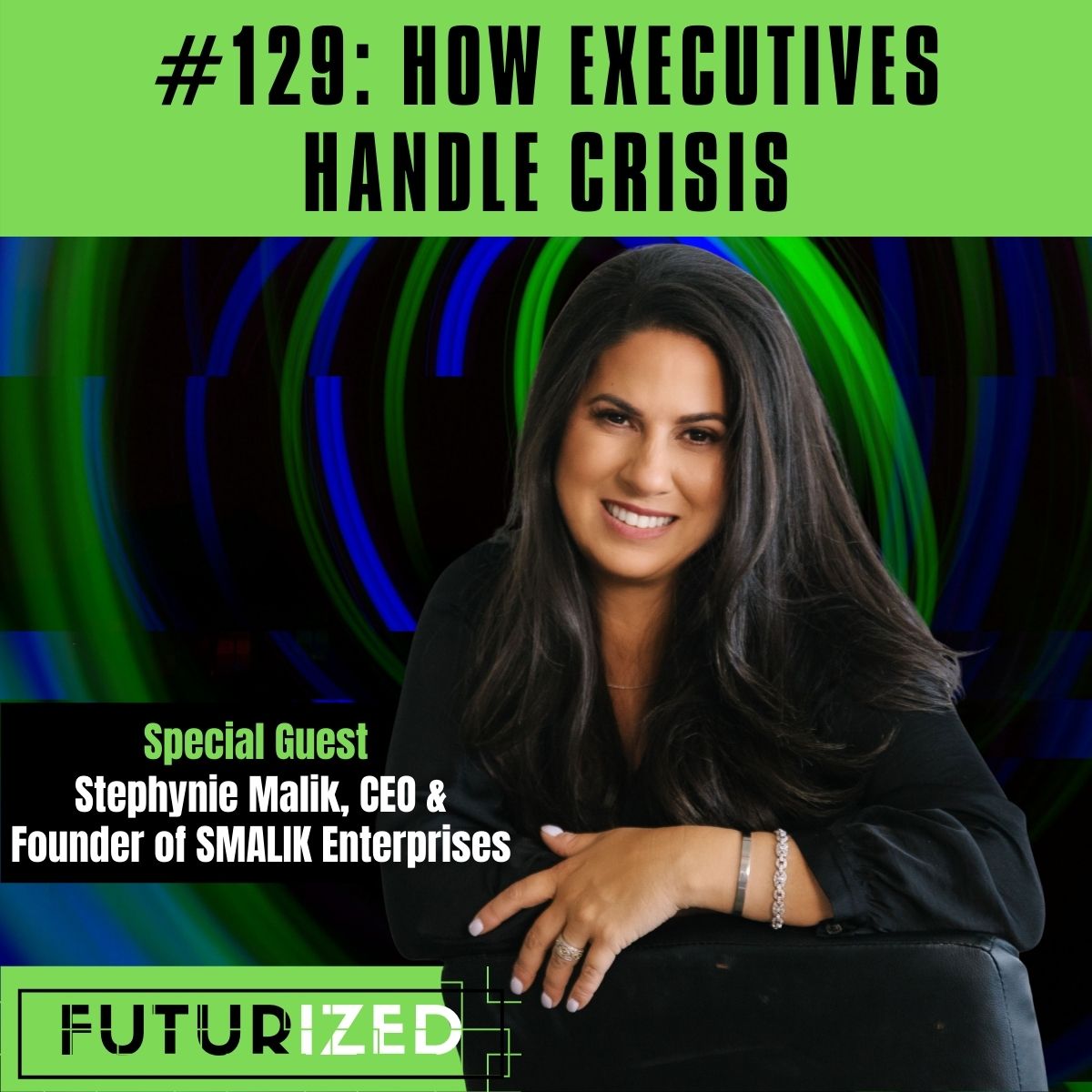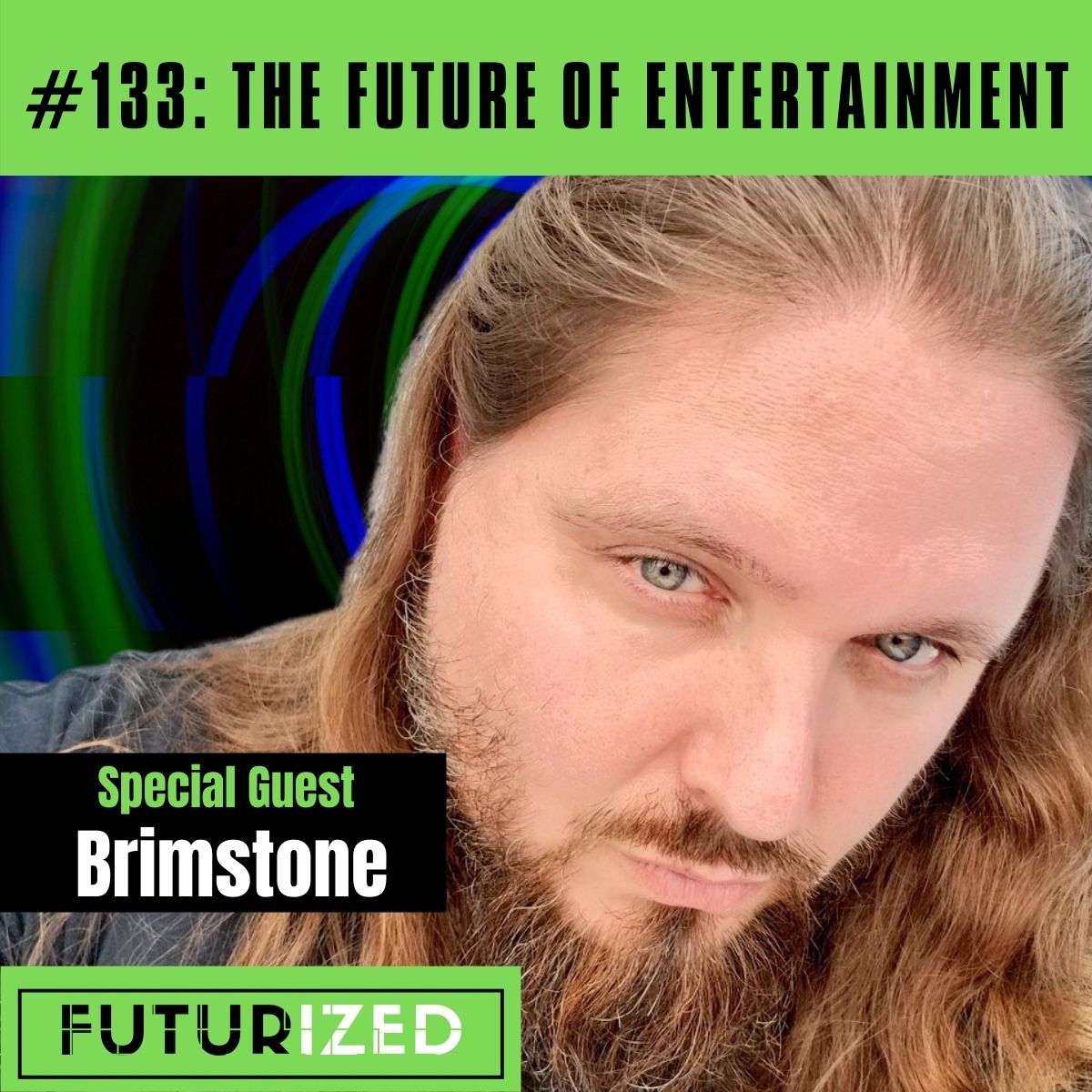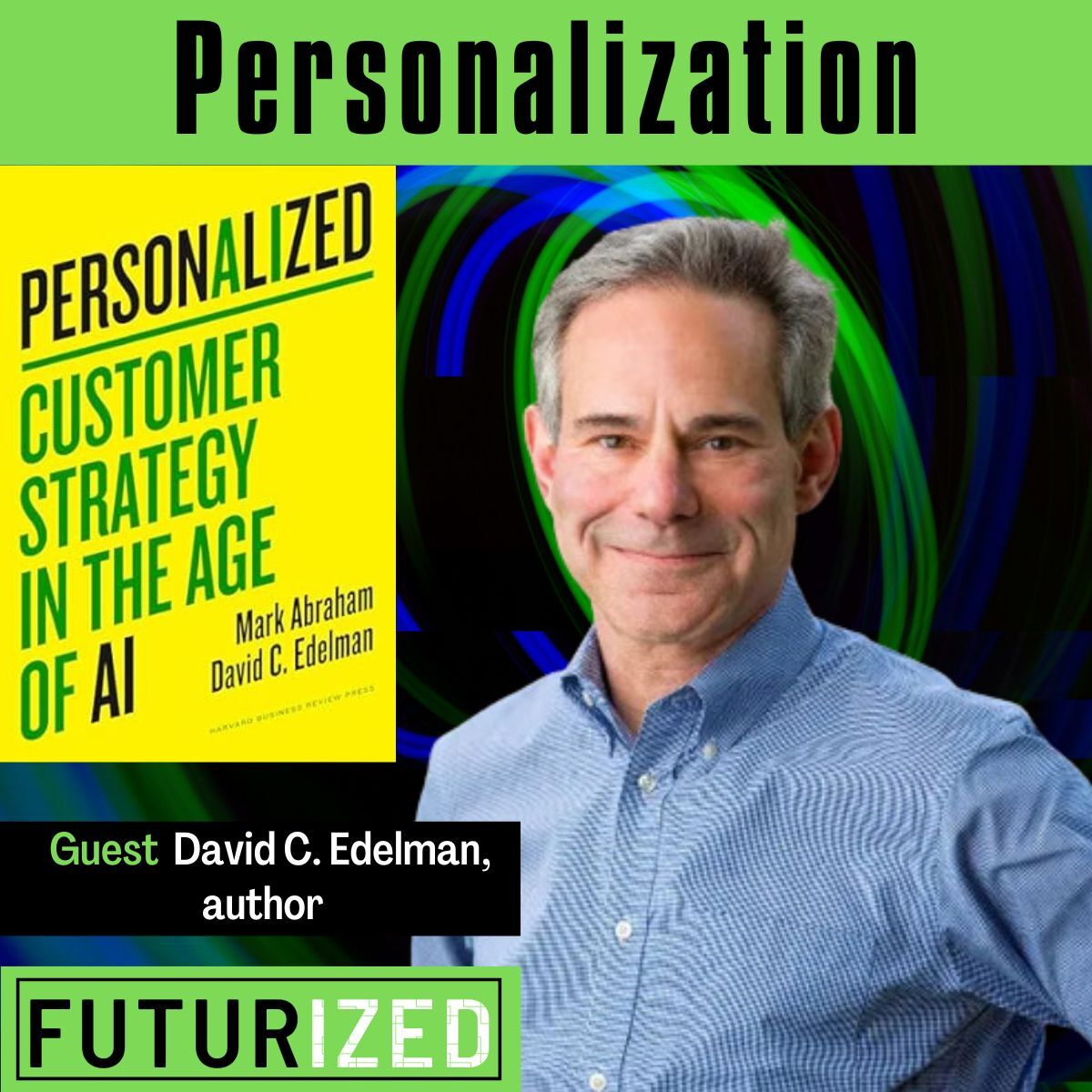The Zero User Interface Experience
Tuğberk Duman, Head of Innovation at Futurice, the Finnish consultancy, interviewed by futurist Trond Arne Undheim.
In this conversation, they talk about Why thinking about a world beyond the screen? Invisible user interface where natural gestures (bod...
Tuğberk Duman, Head of Innovation at Futurice, the Finnish consultancy, interviewed by futurist Trond Arne Undheim.
In this conversation, they talk about Why thinking about a world beyond the screen? Invisible user interface where natural gestures (body movements, perhaps even thoughts) trigger interactions. Current examples making use of Alexa, Google Home, Siri, Cortana, or Google Glass). Experiments, Trends in UI design, Design thinking inspiration and components (chatbots, biometrics, computer vision, new ecosystem business models). Emerging use cases. Surprising industries are first adopters. The next decade—what will happen next to Zero UI and in which sequence?.
The takeaway is that whilst it would be nice to think we are there, we in fact have a ways to go before we reach the ultimate Zero User Interface Experience. Having said that, the world beyond the screen is desperately needed, as we reel from coronavirus-induced work fatigue. The surprising thing is that it’s not really the technology that’s stopping us--it’s our imagination. We would be fully capable of coming up with compelling user interfaces already today, using existing technologies, if we only knew how.
After listening to this episode, check out Futurice as well as Tuğberk Duman's online profile:
- Futurice https://futurice.com/
- Tuğberk Duman (@tugberkdmn) https://www.linkedin.com/in/tu%C4%9Fberk-duman-b0947148/
The show is hosted by Podbean and can be found at Futurized.co. Additional context about the show, the topics, and our guests, including show notes and a full list of podcast players that syndicate the show can be found at https://trondundheim.com/podcast/. Music: Electricity by Ian Post from the album Magnetism.
For more about the host, including media coverage, books and more, see Trond Arne Undheim's personal website (https://trondundheim.com/) as well as the Yegii Insights blog (https://yegii.wpcomstaging.com/). Undheim has published two books this year, Pandemic Aftermath and Disruption Games. To advertise or become a guest on the show, contact the podcast host here.
Thanks for listening. If you like this topic, you may enjoy other episodes of Futurized, such as episode 30 on Artificial General Intelligence, episode 51 which is on the AI for Learning, episode 16 on Perception AI, episode 49 Living the Future of Work, episode 35 on How 5G+AR might revolutionize communication, episode 47 on How to Invest in Sci-Fi Tech, episode 54 on the Future of AR, and episode 31 on The Future of Commoditized Robotics. Futurized—preparing YOU to deal with disruption.
Zero UI_mixdown
Trond Arne Undheim, Host: [00:00:00] Futurized goes beneath the trends to track the underlying forces of disruption in tech policy, business models, social dynamics, and the environment. I'm your host, futurist and author in episode 72 of the podcast, the topic is this zero user interface experience. Our guest is two Burke Dumont, head of innovation at futurist.
[00:00:24] The finished consultancy. And this conversation, we talk about why thinking about a world beyond the screen, the invisible user interface, where natural gestures, which is body movements, perhaps even thoughts, trigger interactions, current examples, making you so Alexa, Google home, Siri Cortana, or Google glass.
[00:00:46] Experiments and trends in UI design and design thinking, inspiration and components such as chatbox, biometrics, computer vision, and new ecosystem, business model, surprising industries that are the first adopters. And we discuss the next decade. What will happen next to zero UI? And in which sequence, how are you
[00:01:09] Tuğberk Duman, Head of Innovation, Futurice: [00:01:09] today?
[00:01:11] I'm very good. Strong. How are you?
[00:01:13] Trond Arne Undheim, Host: [00:01:13] I am doing well as well. I'm excited to talk about zero user interfaces. You have a master's degree from Tampa university of technology, and you've been interested, I think, in in these technologies for a while. And now you work at futurists as head of innovation, but tell me a little bit about your path to taking a strong interest in.
[00:01:34]In how technology shapes up what was it that created this interest?
[00:01:38] Tuğberk Duman, Head of Innovation, Futurice: [00:01:38] Sure. Sure. And great to be here in discussing this topic with you. Let me take a a step back before talking about my career in Tampa, I did my bachelor degree on electronics engineering and my graduation thesis was about training facial recognition.
[00:01:52] I'll go at them. And this was around 2011. So way ahead of. Facial recognition becoming a sort of commodity, especially in consumer markets. That is where I gathered some interest and understanding of this kind of technologies like facial recognition, biometrics technologies, how do they work and what are the caveats?
[00:02:10]How can you basically utilize them in different contexts? So that was the the beginning of my story. And then once I moved to Tampa for doing my. Master's degree on business and technology management. Things started to have a little bit more consumer focused or like application focus rather than engineering and research folks.
[00:02:28] And they the very first interest In creating applications around this kind of technologies actually dates back to 2013, 2014. When a group of students from , including myself actually was involved developing the first ever commercial Google glass application in Finland. So I
[00:02:48] Trond Arne Undheim, Host: [00:02:48] love this.
[00:02:48] I love that it started with a student project. I, every time I asked people how they got into something, it there's always an interesting background than I love the fact that it was a student
[00:02:58] Tuğberk Duman, Head of Innovation, Futurice: [00:02:58] project. Yeah. That's what the fitting in does is great at, putting a. It's student put putting the students with the corporate collaboration you're on right from the gate during the studies.
[00:03:09] And this was a specific university academia, and then a corporate collaboration where a software consultancy in, in, in temporary was supporting us, basically creating a Google gloss application for traffic wardens. Those people who make sure that, parking tickets are paid or not.
[00:03:25] And they the problem where it's solving there, it was the fact that. It's a very lengthy process. They get into trouble in a while that it's because the process is so long, they get into trouble. They catch up in the, find themselves in arguments with David, the angry drivers, because there has been a there's multiple stakeholders in this.
[00:03:43] There's the city, there's a technology providers. There's a the online parking ticket providers. There's the machines that you see out there and they the paper tickets. So you need to make sure that you check all of these. And uh, for each operation for each task they almost added the different device.
[00:03:58] So they had a smartphone to, write down your license plate to see if you have paid or not. Then they had this I don't know, a couple of kgs, a mini PC in their pocket that they carry around, hold along. Where they type all the details relating to the car. What is the license plate?
[00:04:11]What is the brand? What is the color? What is the address? So all these things they need to basically manually input, and then they have a printer. They carry which basically prints to ticket them and they leave it there. And this process can take up to five minutes, basically. What we have done was basically used a computer vision and license plate recognition to take a photo whenever there's a license plate in the field of view with the camera.
[00:04:34] And automatically check it with the the parking ticket providers, online parking ticket providers and deliver the results to the the traffic ward. So basically if the ticket is not paid for automatically the system directed the user to actually print the license plate and all these information that they needed to actually put.
[00:04:52] Input manually were drived were understood from the image that the gloss was taking. So the address came from the GPS the color of the car, the license plate the model, these are all included in the image that we attached to the ticket itself. So all of a sudden, you end up with a process of seconds, from minutes to seconds.
[00:05:14] And when you are involved in that kind of transformation, When you see that happening before your eyes, your brain starts to wire in a different way. You start to seek this kind of, where can I find something similar this process involvements, radical, or even incremental innovation where we can make the life of these people better.
[00:05:35] So your brain goes into that mode where like you start to have an eye for the it's kind of stuff. And that's when. Basically, I remember this old memory of mine where I did my, teases on facial recognition. And then I was like, okay, if we are able to recognize license plates, And, make the process much faster, much more convenient for this group of people.
[00:05:57] Where can we use facial recognition to recognize people and make their experience, equally convenient and seamless. And of course the place probably everybody thinks More like the experiences where we have like stress embedded into it. Of course airports and a traveling experience came to my mind first.
[00:06:15] And that's also coming from an old memory where I was a part-time check-in agent at an Istanbul airport back in the day. And being involved in, checking people in and hearing their complaints all the time, how stressful and how long this process is. So at that point putting the pieces of the puzzle together and actually coming up with a concept where.
[00:06:33]The idea was like, why don't we recognize let's start with the, actually the premium passengers. So the, the platinum loyal customers of airlines, why don't we recognize these groups of people since we airlines do know a lot about them and they are receptive for this kind of exclusive services, they actually there's a demand for it.
[00:06:50] So why don't we use the same idea to actually recognize this group of people? And then at the end of my study is I send an email to Helsinki airport. Actually the group is called Helsinki. Airport is one airport in Finland that they operate. And that's how I landed my teasers position. So for 10 months, I actually investigated both technical and business visibility of this kind of concept being applied at the airport.
[00:07:13] And at the end of the day we delivered the teasers, the results were promising. And the story goes that at the time futurists or futurize was the digital partner of and still is actually they basically asked futurize to, to hire me so that they could continue on the project.
[00:07:30] So that's how I started at futurize back in the year, 2016 and the, my, like a first order of business was setting up a biometrics units to explore more and more of these, human machine interaction technologies and how they are going to shape the future of it. Huh,
[00:07:46] Trond Arne Undheim, Host: [00:07:46] this is fascinating because these are two fairly manual sort of frontline tasks that, one might not have picked as the most obvious.
[00:07:55]I, not everyone would call these complicated work processes because it's not. So visible, in the airport you you're frustrated cause you're waiting there with your luggage, but I don't think we necessarily all appreciate how complicated and how many tasks are involved in each of these to a sort of frontline service jobs or frontline kind of worker positions.
[00:08:17] So here's my question. Why. And you've obviously started answering in it with these two examples, but why think of a world beyond the screen? What is it that, I'm sitting in front of three screens right now happily. But I will admit, I am also slightly frustrated with the screen.
[00:08:33]So why think beyond the screen and what is the prospect that we will move beyond the screen? Cause it seems to me that we are in this digital age where they may be at least that transition period where it's going to be much more of the screen facing work. We are going to be fairly passively.
[00:08:50] Doing kind of digitization 1.0, we're going to be in front of these screens. So what do you say to that and let you know how realistic are, beyond these smaller experiments admittedly that you have done in augmented reality, how far are we from taking large chunks of work into the augmented realm where we don't need these screens anymore?
[00:09:13]Tuğberk Duman, Head of Innovation, Futurice: [00:09:13] Yeah, very good question. And actually the continuation of my individual story partially would answer that and let's start from there and then expand a little bit, but as soon as I started this despite metrics, business unit that that futurists after a couple of cases, like we continued working on fi Navea and Finnair.
[00:09:28] On what we call the walk paced identification. And then we created multiple individual applications here and there. Facial recognition, payments, facial recognition, smart vending machines using all sorts of other elements of computer vision in general. But what we've realized is people are not interested in biometrics per se.
[00:09:45]Like in any technology, people are interested in the value proposition. What is it in it for me, what a part of my life. It really enhances, my, and that's when we actually like started to see this pattern where What we are really interested in or what we are really seeking for this, actually, this is not a new thing, but we are basically, especially in this era quite wired to, to choose the path of least resistance, I guess that comes from due to the fact that we're being bombarded with so much information from so many different channels.
[00:10:15]Technology was came to our life to make our lives better. And it did for sure in many ways, but also at Basically brought all these, noise that we have all the time around us. What we realized is people are trying to get away from it, or maybe even shift the responsibility of parsing that information.
[00:10:34]Shift that shift, that responsibility to the service provider or to whatever it is that they're interacting with. And that's when we realize that the paradigm shift you're looking at is not biometrics. It's what we basically call the zero user interfaces. And then the name refers to here is that the fact that you don't need to actually interact with a physical interface, like your screen For, in order to be able to access the information or access to services and products that you need.
[00:11:00] And this is not like something we at futurist invented. Many people, many companies have upset the same paradigm shift. Some people named it as it's like beyond digital MBN computing, con technology as Google calls it.
[00:11:14] Trond Arne Undheim, Host: [00:11:14] Yeah. So the Available technologies just in terms of chatbots, right?
[00:11:19] If you think about Alexa, Google home, Siri Cortana those are, one instanciation of it, although arguably they haven't delivered fully on their promise. I was one of the beta users of all of these But beyond some very pedestrian use cases, like alarms and stuff, and, the weather super useful things.
[00:11:41]Sometimes the recipe, although, that hasn't really panned out so much because you still need the screen to, to see this thing. What are some of the more interesting gesture based or other types of interfaces that you think how some promise.
[00:11:54]Tuğberk Duman, Head of Innovation, Futurice: [00:11:54] Sure. I'll answer dad, but you made a good point in there.
[00:11:57] So we, we have the chat bots. We have these voice assistants that, try to touch us that aspect of what we are talking about here, but I guess it's important to define what like what constitutes a truly zero user interface experience in a way. So it has building blocks. And some of these individual technologies that you mentioned, chat bot or voice recognition, it addresses a part of, it makes that one single building block, but without the complimentary parts, it's not going to ever deliver the actual promise of what we're talking about here.
[00:12:30] So through our work, we basically categorized there's these building blocks on the three categories. So th the first one is the service or the product actually Recognizes whom they are serving too. So there's this recognition of the individual that the system is interacting with. And nowadays it's a stale, mostly hidden beyond passwords and the, traditional identification system.
[00:12:52] So that's where, for example the biometrics focus comes in and biometric is not the off-course only technology that is able to do that intuitively of course, but it's one technology within that role. The second part the interaction part. And that is where, for example, likes with Alexa, a Google home is heavily utilized interacting with a service, essentially it should be as easy as, grabbing a cup of coffee as intuitive as taking your.
[00:13:18] A dog to walk or chatting with a friend. So that's why we see more and more applications of of Alexa and Google home around us. And the third part is the contextual intelligence. Think of this two things that I say a grand door, a grand entrance to a palace without the palace itself, the entrance doesn't really mean anything.
[00:13:42]It's just, you go in. Oh, okay. That was cool. And now you probably get back out so that the palace is the contextual intelligence. So once we recognize the individual and once we know how to intuitively deliver that information, it comes down to what we deliver. And when, and that is the contextual intelligence part, which heavily relies on what kind of data do we have?
[00:14:06] What data we have. Access to and will have access to. And how do we get insights out of it and turn it into some piece of actionable and needed information for the individual?
[00:14:16] Trond Arne Undheim, Host: [00:14:16] That's that's actually a very useful full overview. So the question then is, where are we on, on, on each of these in, in, in and also larger question than that toper when you think about these things, a very fancy word for this as we got to apply some design thinking to like really figure out what's going on but truly, how do you even just define which use cases are ripe for this kind of disruption or simplification?
[00:14:40] Because I guess it's, now you have defined what the components are. Yeah, but if you start trying to simplify something where the technologist just isn't there yet on either of these three components, then you're in trouble. So you earlier talked about to, pretty simple. Processes and I'm sure, if you fast forward, several years later, they're not still fully implemented right.
[00:15:04] In airports around the world, either of these steps that you talked about for the check-in. And similarly, there are parking wardens around the world who still, at least they have different elements of what you described and they're not all why one stop shop to, to get this thing carried out.
[00:15:20]So how do you think about when you're, thinking about new. Yeah, applications. Are you waiting for the end users to come to you with that? Or how do you, what is the step-wise process to identify these things?
[00:15:32]Tuğberk Duman, Head of Innovation, Futurice: [00:15:32] If you're ahead of the curve and in my line of work I usually am the way it goes.
[00:15:36] And this is one of the aspects which I love working at a consultancy. We can actually make hypothesis around technology. So we could actually take one technology and to try to figure out, where it lands in terms of applications. And we have that luxury because we don't have a single context.
[00:15:52] We don't have a single scope. We work with companies in insurance, in navigation, in mobility. Basically we have the luxury to take any technology and. Look into it. Try to make sense of it and come up with a concept that we are able to sell or experiment. Of course, that is there's a starting point that one of the enablers that we have, but the second part is to answer your question, it's technology maturity is an important aspect.
[00:16:16]One of the reasons why, for example, we don't see traffic wardens is, are not. Worldwide or Coquit with Google losses as the fact that, the smart glass technology is not come to a price point and then a robustness where, we could reliably produce these applications anywhere, and then the people are able to use it.
[00:16:35] So technology maturity plays another role. And the second part is. If you want to achieve a zero UI experience, especially in the societal and business dynamics that we operated currently, and that is going to change, and we will get to there. You need to look into places where the ownership is not distributed.
[00:16:53] So this is very important. And and tie example to this, what we have actually done at the Helsinki airport. So we created this walk based identification experiment there, right? The idea was that we testing a future where you as a passenger register yourself, once you buy your check-in, you take a selfie it is attached to your itinerary, and then you come to the airport.
[00:17:13] And the checkpoints you're not being stopped. The recognition is done while you walk from point a to B and we only stopped the pupil who do not have the access to actually be in there by. So we reversed the process and take the stress out of your itinerary. You know what, but the problem with it is that for that to work.
[00:17:33] At the airport, you need to have the airports on board. You need to have the airlines on board. You need to have due to three people on board. You need to have banks on board because that they are the ones who actually provide, the payment systems at the airport who else you need to have the border control on board.
[00:17:50] You need to have the tax office at the airport. So all of these people who make up. The single itinerary often experience. And that is not even enough. Like you, you basically talk to all the Finnish authorities and get them on board, but your journey doesn't end here. This is just the beginning.
[00:18:07] Then you go land somewhere. So we actually need to get the other airports and all these officials on board as well in order to provide you the consistent level of experience that you signed up for.
[00:18:20]Trond Arne Undheim, Host: [00:18:20] And then don't forget, you need the individuals involved who are going to receive the service, right?
[00:18:24] Cause biometrics is a kind of troublesome that
[00:18:27] Tuğberk Duman, Head of Innovation, Futurice: [00:18:27] way. Yeah. Yeah. Of course when you start this kind of project, you have to have the basic assumptions that there is going to be a certain amount of people who will be receptive for this kind of services. That's at the beginning assumption and you validate it through the topic, but yes.
[00:18:40]So definitely, so you need to have all these stakeholders on board and it's just it's a tall order. It's, I'm not going to say that it's impossible, but I would respect the authority who is able to orchestrate that ecosystem and put something out there very rapidly.
[00:18:55] So that's,
[00:18:56] Trond Arne Undheim, Host: [00:18:56] you're illustrating though, is that this isn't. Just about the technology at all. Really it's about orchestrating a number of actors, which I guess brings me to, what are the promising industries where you're starting to see some of this happening or where you think in the next decade that we'll see it.
[00:19:11]Is it fair to say that, I don't know, let's just say construction industry manufacturing. These are fairly concrete industries where there at least historically are a lot of. Manual actions taking place, but then you also brought in consulting and there's many other aspects of consulting where not only could you suggest things, regardless of industry, just because you think you might have a solution to it, but But there might be some application in consulting in and of itself perhaps.
[00:19:38] And w what are some of the industries that you find promising or do you not really look at it in an industry lens? It, you just, you have to look at the individual kind of task to be done in more than you're looking at the overall
[00:19:50] Tuğberk Duman, Head of Innovation, Futurice: [00:19:50] industry. No, of course. This is about the level of impact you are about to make, or you are willing to make we have done, as I said looking at individual players who own from beginning to end several processes, we work with banks to create facial recognition, payments, for example where basically we didn't need to, bring on board and other stakeholder.
[00:20:09]Everything is handled by the individual organization. That's part of it. We created vending machines that are using computer vision and facial recognition to recognize the objects, to recognize the individual. And basically the interaction is similar to what you have at your own fridge. But then we have done that in the retail space where we have the, our partner, our client.
[00:20:28] Have the control over whatever is happening in the physical space. So if the goal is to create these single applications and T basically what is it that the future, where as a company providing these services, you should go, or as the recipient of the service like that, the client, what should I do with this these technologies, these trends that are happening this might be the first thing to basically determine, and actually start taking an actual for.
[00:20:53]That will be the first question. What w what is the goal? But of course, the second question is when you are looking for making a bigger impact, create radical innovations based on these big trends and technologies that are coming into Intuit five, then we are looking at something else. We're not looking just a, as you said, it's not just technology question or maturity question.
[00:21:12] It becomes the dynamics of how businesses work
[00:21:15] to
[00:21:15] Trond Arne Undheim, Host: [00:21:15] not say this is what I was going to get to, because. And I don't want to make fun of this, but but I know one of the examples that you gave me earlier was you were working for a Norwegian client, actually on a smart fridge. And that's not, it's not a joke with the smart fridge.
[00:21:29] It could be useful. And it's one of these tropes of early technology. Visionary thinking where there were Oh yeah. What if we had a smart fridge that recognized what we put in and out, and I realize you've done it actually done an experiment with an, I don't want to make fun of it, but I want to use it just to illustrate the fact that here we're talking about making an existing, fairly mundane action, slight bit more efficient, but not leaps and bounds, but I think.
[00:21:56]What's really interesting is when you're using technology for a new and creating a new emergent future where the action you're creating didn't exist before. In the case of a traffic warden or in the case of a check-in agent, or even in the case of you getting some stuff in and out of your fridge, these are fairly mundane things.
[00:22:17] And I would argue they don't change in any fundamental way by being digitized, even. If there is a zero UI. So as much as I would love to have my fridge recognize, why my cheese, when I put it in and out and how much milk so that I don't run out of milk my life, wouldn't fundamentally alter.
[00:22:36] But what are some of the things, when you are thinking about this in more of a future context, what are some of the things you think could emerge from this development that are slightly more earth shattering and then, mechanizing your fridge?
[00:22:49] Tuğberk Duman, Head of Innovation, Futurice: [00:22:49] Yeah. A very good point. I think one thing that needs clarification here is that the experimentation with these new technologies and those new ideas is usually.
[00:22:58] Have a single top behind it, which is. Clarifying the uncertainty and at the end of the day, a result of an experiment could be that, okay, this didn't create the value that we thought that it would create. And that's a valuable result, which tells the company that, okay, maybe we shouldn't spend more resources into this piece of technology or this piece of trends.
[00:23:18]Coming back to the second question that you post, I think that is where. Like the point of changing a single interaction like with your fridge, or like when you do a payment, the efforts in there are usually coming short because I believe our experiences does not consist of single point of interactions.
[00:23:39] There's a beginning. And there's a net there's a before and after. So it's continuous. That's why we are struggling to create these earth shattering radical innovations because companies are. Have this focus of looking into that, the processes and things that they own and they can control.
[00:23:57] And that's where we get stuck at. I'm sure you've heard that, that the famous quote for a buzz Aldrin, which is that I've been promised mice, but all I have is now Facebook not saying that Facebook wasn't an important innovation, but that the point being is that this kind of mindset of, Looking into the, your own influence fear is one of the barriers to create these earth shattering applications that you
[00:24:19] Trond Arne Undheim, Host: [00:24:19] yeah, I think that is very true, actually, because.
[00:24:23]If you look at any current company, any current authority even government, and by the way, government, could really benefit from these these making their interactions with their citizens slightly less. Honorous so there's a massive potential here in digital government but even for government, that really is for many people, important in so many aspects of, of our lives.
[00:24:43] It really is about creating a new context for you where you start collaborating in new ways because the technology makes new things possible. Yeah, coming up with these new applications is just going to, is it just going to take experimentation then and time? And is it a question of just innovation layering in innovation upon innovation?
[00:25:03] Or is there something fundamental here that you personally are waiting for? Is it the cost level of. Google glass, for instance, obviously it had a failed launch in the enterprise market and in the consumer market, it was a completely overblown idea that this interface was going take off in the consumer market.
[00:25:22] Yet it has made some inroads, in, in enterprise. Are you working on hoping that these other type of more immersive interfaces are gonna drop in price? Like what is the technology barrier here?
[00:25:34]Tuğberk Duman, Head of Innovation, Futurice: [00:25:34] I think like working a lot with different pieces of technology, what I have come to realize that it's not at all a technology question.
[00:25:43]Of course, Google gloss pause a bit early ahead of time and still that the smart gloss is there is going to be attempts and there is already Kind of all your first glosses attempts at the market, but it's still, getting there to be part of the consumer market.
[00:25:58] So for some technologies things are going to take more time than others. But I think th the question shin is how do we integrate average companies? How do we set structures? How do we set, like rule of the game so that companies are more open to collaborate. And I think systemically instead of looking at singular processes that they have they're owning and especially in Finland, we see that this slowly start to happen in the industries that are usually physical first.
[00:26:28] So I'm putting the digital first companies, big platforms aside for a second for this argument sake. And the reason for that these companies let's take Finland, for example as a, as an example here that we talk about Finland has a hundred year old industrial history.
[00:26:43]Still 80% of the exports are manufacturing of physical goods. This means that we have a lot of companies here who have locked in procedures heavy investment on physical assets that knows how to pro like that has been optimized to the theory to a manufacturer, a single thing. Precisely. So for this companies to basically start thinking about the new technologies and applications of it, and then how can bring that, new business layer on top, they need to hire skills.
[00:27:14] They need to fund R and D. They need to make investment in developing new services and product like that digital expertise. And it isn't. Like from business point of view for, from companies who are like listed in the stock market who lives and dies every quarter, this is an impossible investment to make.
[00:27:33] And those are the
[00:27:34] Trond Arne Undheim, Host: [00:27:34] digital though. Like you pointed out, it's not just digital expertise. As in if you hired a few smart grad students in, in technology, you wouldn't get to where you want to get. It's a, it's really about creativity and it's about combining. Some relationship to what you were doing in the past, in your manufacturing firm with some really radical opportunities to perhaps do completely different things, right?
[00:27:58] Because this is what you're talking about when this really is implemented, it could mean that you go from, famously right. Nokia. They were manufacturing shoes and I rain boots basically. And then they went to cell phones. It is actually akin to the Nokia move.
[00:28:15]The kinds of leaps and bounds it is, going from rain boots to cell phones is not very obvious. And I think what you're talking about is even more radical because it's may, maybe it doesn't even involve manufacturing anymore. It could be that the expertise that the company had.
[00:28:33] Is best applied in a completely different
[00:28:35] Tuğberk Duman, Head of Innovation, Futurice: [00:28:35] domain, for sure. Sure. A good example for this as like the earliest signs of this happening here is the construction industry. It's a zero sum game. It has been a zero-sum game construction industry for a good while because it's basically the, either you win that particular construction project or the other.
[00:28:50] So it's like a competition that doesn't generate, new markets, new overall Valley, but just compete for the resources. So what is happening here is that They started to actually stop thinking construction as a, a thing that a construction company builds. And then the sub constructor comes, put the elevator and then the other company brings in the center.
[00:29:08] They started to look at the whole picture. What is the whole value chain that we are delivering here? And we have a government support it ecosystem here is called Keiko T K E K O a. That's how you spell it. And They are basically looking at the seven big companies who are operating in building ecosystem.
[00:29:29] These are people flow companies. These are sensor companies. These are construction companies. These are technology providers, it companies, they put together their resources, data assets API APIs together to see the big picture, like what other value that we can provide, what living experiences by putting together other data sources and assets together, what kind of new living experiences that we can create that doesn't.
[00:29:54] Exist yet. And this is for any single company in this ecosystem. To do this. It is, as I say, it comes back to what I told you as an example of a manufacturing company, hiring all that talent sporting all these opportunities and building every single block that leads to that value proposition.
[00:30:10] It's just a massive investment. And it hasn't been done. It's not going to be. Done. So that's why now company is looking at where can we create these ecosystem thinking where the output of the ecosystem is much bigger than any of the individual stakeholders of that ecosystem can actually create.
[00:30:26] So
[00:30:27] Trond Arne Undheim, Host: [00:30:27] this brings me to the question, a lot of what you're describing is as exciting as it is it's slightly sort of nebulous concepts. What are the light houses that we should be looking at? In terms of seeing this come to life, are there startups that we should be looking at? Are there technology companies, obviously tracking Google glass and other AR technology, are there corporations that are starting individual corporations where you, we can where you foresee that this kind of thinking will emerge first and we should look there.
[00:30:58]Where should people who are interested in this who wants to track. These opportunities, these trends, or, this is not even really a trend yet, right? It is, these immersive things are happening almost like mushrooming, a little bit under the radar actually. W where
[00:31:14] Tuğberk Duman, Head of Innovation, Futurice: [00:31:14] should people look?
[00:31:14]I think I would maybe like there are certain areas to look into and they play different roles in this market and how, like they should be looked at in terms of what is it that they bring or they take away from it. And the first one is they, the drivers. So the drivers are like the.
[00:31:30] Context or the applications that is actually driving the development of these kinds of technologies. And those are the industries that I see that are heavily driving those estate, the autonomous driving and the smart home industry. So with especially autonomous driving the meaning of. Being in the car is changing, right?
[00:31:49] It's from it's moving away from doing like driving actively paying attention to something, to, doing something useful with your time in the car. And that's why I see that the company is already heavily investing in sensors and edge computing technologies in order to sense what is happening in the car and react to it proactively.
[00:32:07] Provide the services and information that the individual needs at the time of the need. And that is bringing a lot of investment into the startups we're actually operating in this domain. A good example is again from Finland. There is a sensor company called force yacht or force IOT. It's based in Tampa and then they are manufacturing this paper thin stretchable printed sensors.
[00:32:31]Basically what they are effectively doing is providing the means to turn every single physical surface into a digital experience and the automotive industry, not. So surprisingly is one of the biggest buyers where we see these technologies coming into the console of the car to understand, how the interaction in the car works and how it can be react to it.
[00:32:53]So those companies are the driver's hands. They're also driving where the investment goes in terms of what technology develops. Of course, there's going to be some companies affected adversely or industries are going to be affected adversely from this development, which is one concrete example that comes to my mind is the healthcare.
[00:33:11]When we have so much. Sensing technologies around us that are doing continuous sensing and and it's mobile. The, point of care type of healthcare approach is going to be in one way or another disrupted. We're already looking at for example, take brain computer interfaces.
[00:33:30]Which you use for you have used for medical purposes at controlled environment in clinics in hospital to sense certain brain signals like EEG, for example, V started to see commercial application, end user applications of it. It's a measuring your sleep, measuring your stress level, measuring how your meditation goes.
[00:33:48] So these devices are measuring constantly like vital health data. And already we are seeing some signs of from Industry, how to healthcare industry, how to actually incorporate this data that is uncontrolled it's not, from a controlled environment, how can we get that data and make use out of it?
[00:34:08]Is it in a research? Can it be used for example? Before you go to the hospital, without your coming to the hospital, we can judge, if you're ready for a surgery or not, you don't need to, we don't need to book your slots. We just follow you at your home with your device for five days.
[00:34:23] And if you see that it's not working well for you, we automatically postpone the things and save a lot of money while doing so. Obviously the healthcare is one of the industries that I believe going to be effected by this as the like on the disruptive disrupted stakeholder.
[00:34:39] And if we don't, react rapidly.
[00:34:43] Trond Arne Undheim, Host: [00:34:43] All right. On that note, this is, these are interesting prospects, a tumeric. I think we have covered a lot of ground. It seems like this area is gonna evolve perhaps rapidly, but it's going to also unfold. Slightly surprisingly and with kind of ebbs and flows, it doesn't seem like there's not, we're not waiting for one thing here.
[00:35:06]We're looking at an emergent phenomenon and like you pointed out these ecosystems will have to evolve. And they're going to create interesting winners and losers. I thank you so much for laying this out for us and best of luck in your continuous innovation
[00:35:18] Tuğberk Duman, Head of Innovation, Futurice: [00:35:18] efforts. Thank you.
[00:35:19] It was my pleasure.
[00:35:22] Trond Arne Undheim, Host: [00:35:22] You had just listened to episode 72 of the futurize podcast with host out in Haim, futurist and author. The topic was the zero user interface experience. Our guest was to Burke Dumont, head of innovation and futurist the finished consulting. In this conversation, we talk about why thinking about a world beyond the screen and about the invisible user interface, where natural gestures, such as body movements, perhaps even thoughts, trigger interactions.
[00:35:52] We look at current examples making use of Alexa, Google home, Siri Cortana, or Google glass. Experiments and trends in UI design and design thinking the inspirations and the components that go into it, including chatbots, biometrics, computer vision, and new ecosystem business models. And we look at emerging use cases and the surprising industries that are the first adopters.
[00:36:15] Now, also what happens in the next decade, what will happen next to zero and in which that's my takeaway is that was, it would be nice to think that we are there. We in fact have a ways to go before we reach the ultimate zero user interface experience. I think I said that the world beyond the screen is desperately needed.
[00:36:34] As we reel from coronavirus induced work fatigue. The surprising thing is that it's not really the technique allergy that's stopping this. It's our imagination. We would be fully capable of coming up with compelling user interfaces already today using existing technology.
[00:36:54] Listening. If you like this topic, you may enjoy other episodes. Futurizing such as episode 31 artificial general intelligence episode 51, which is on the AI for learning. Episode 16 on perception, AI episode 49. I'm living the future of work episode 35 on how 5g and AR might revolutionize communication episode 47 on how to invest in scifi tech episode 54 on the future of AR and episode 31 in the future commoditized robotics, futurizing prepare you to deal with disruption.




































